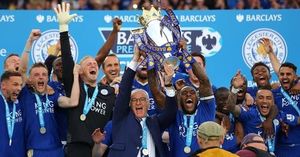In the fast-evolving world of quick-service restaurants, Taco Bell is making a daring leap into a new frontier: specialty beverages. Long known for its late-night tacos and creative menu twists, the chain is now betting big on drinks with its Live Más Café concept. The move comes at a moment when the beverage segment is not just hot—it’s redefining what fast food can be, and Taco Bell’s timing couldn’t be more intriguing.
According to CNBC, Taco Bell launched its first Live Más Café in December 2024 in Chula Vista, California, and quickly followed up with a second location near the University of California, Irvine campus ten months later. By the end of 2025, the company expects to have 30 of these beverage-focused cafés up and running across Southern California, Dallas, and Houston. But unlike McDonald’s now-defunct CosMc’s spinoff—which operated as standalone stores—Taco Bell is embedding Live Más Café right inside its existing restaurants. Customers order at kiosks and watch specially trained “bellristas” prepare their drinks at a prominent counter, turning beverage prep into a show all its own.
Why this sudden focus on drinks? The answer, as industry analyst Mark Kalinowski told QSR Magazine, is simple: “Beverages are the most scalable, margin-rich category in fast food.” And the numbers back it up. In 2025 alone, Taco Bell has sold more than 600 million beverages—a whopping 16% jump from the previous year. More than 60% of all orders now include a drink, and the company has set its sights on building a $5 billion drink business by 2030, a goal first revealed at a March investor day.
Stepping inside a Live Más Café, it’s clear that drinks are the star of the show. Digital menu boards highlight a vibrant range of beverages: churro chillers (creamy milkshakes topped with churro chunks), specialty coffees (served hot, iced, or blended as a “chiller”), brightly colored refrescas (with lemonade, green tea, or Rockstar energy drinks as the base), and rotating “bellrista favorites,” such as the caramel apple empanada churro chiller. Customers can watch as their drinks are assembled right in front of them, a far cry from the behind-the-scenes assembly of Crunchwrap Supremes and Chalupas.
Liz Matthews, Taco Bell’s global chief food innovation officer, explained the appeal: “I think drinks are big right now because I think people are really craving unique, interesting flavors in their beverages, and we hear that all the time from our consumers.” She added that while Taco Bell’s beverage menu offers plenty of variety, the company found that most customers prefer curated drinks over too many customization options. “What we found when we talked to consumers, they actually really want us to curate their drink for them,” Matthews said.
The results so far have been impressive. The Irvine Live Más Café has been selling more than 900 drinks per day since its September 2025 opening, with over a third of orders including a beverage from the café menu. The Chula Vista location, open nearly a year, moves more than 750 drinks daily—four times its initial sales forecast. Internal data cited by QSR Magazine shows that pilot Live Más Café stores in Texas and California have seen average check sizes jump by nearly 18% compared to traditional Taco Bell locations, driven largely by repeat morning and mid-afternoon visits.
This surge isn’t just a fluke. Across the fast-food universe, beverages are stealing the spotlight. Shake Shack is offering lemonade with mini raspberry popping boba, Panera Bread is testing frescas and energy refreshers, and Chick-fil-A plans to launch Daybright, a beverage-focused restaurant, in Georgia later this year. Even McDonald’s, after winding down CosMc’s in summer 2025 due to underwhelming financials and franchisee interest, is still testing new coffee drinks and refreshers at more than 500 U.S. outlets.
But Taco Bell’s approach is distinct. Instead of creating a separate brand, it’s leveraging its existing stores, staff, and—perhaps most crucially—its bold, youth-oriented brand identity. “People already associate Taco Bell with fun, energy, and bold flavors,” said restaurant consultant Alicia Morales. “This is about giving those same fans something new to crave at 9 a.m., not just midnight.” The company’s playful spirit is evident in its menu, which sticks to Mexican-inspired roots while offering a sense of novelty and indulgence.
Appealing to younger consumers is at the heart of the strategy. Generation Z and millennials—who crave experimentation, novelty, and “little treat” moments—are driving the specialty beverage trend, according to Varchasvi Singh, a foodservice analyst for Mintel. “Among younger consumers, in particular, we see that fast-food dining is just as much about experimentation and novelty as it is about indulgence,” Singh told CNBC. Taylor Montgomery, Taco Bell’s global chief brand officer, echoed this sentiment: “Over the past five years, we’ve really, really been transitioning and thinking about the brand and how to position it for Gen Z, and so Café was really born from that.”
Live Más Café isn’t just about drinks—it’s also a laboratory for broader menu innovation. For example, agua frescas, which started as a café-exclusive item, have already been rolled out nationwide after proving wildly popular. The café’s coffee offerings dovetail with Taco Bell’s push into breakfast, a segment the chain has eyed for years but struggled to fully capture. “It also acts a little bit as a test market where they can get some more real-time data. Which combos do people do the most? Which customizations matter the most?” said Claire Conaghan, a “trendologist” at Datassential.
There’s a practical side, too. By integrating Live Más Café into existing stores, Taco Bell sidesteps the risks and costs that tripped up McDonald’s CosMc’s experiment. As Montgomery told CNBC, “Today, we’re not known to be a beverage destination—yet.” But with the early success of Live Más Café, that could soon change.
Despite rising menu prices—up 75.5% since 2019, according to Technomic’s Ignite Menu—customers continue to flock to Taco Bell. The chain has consistently outperformed both Wall Street’s expectations and its Yum! Brands siblings, KFC and Pizza Hut. In the second quarter of 2025, while many competitors reported shrinking sales, Taco Bell posted same-store sales growth of 4%, cementing its status as a primary growth engine for Yum.
For now, Taco Bell’s bet on beverages seems to be paying off. If the Live Más Café concept continues to thrive, the chain may not just be the place for tacos and late-night cravings. It could become the go-to destination for caffeine, energy, and the next wave of fast-food innovation—one bold, colorful drink at a time.



